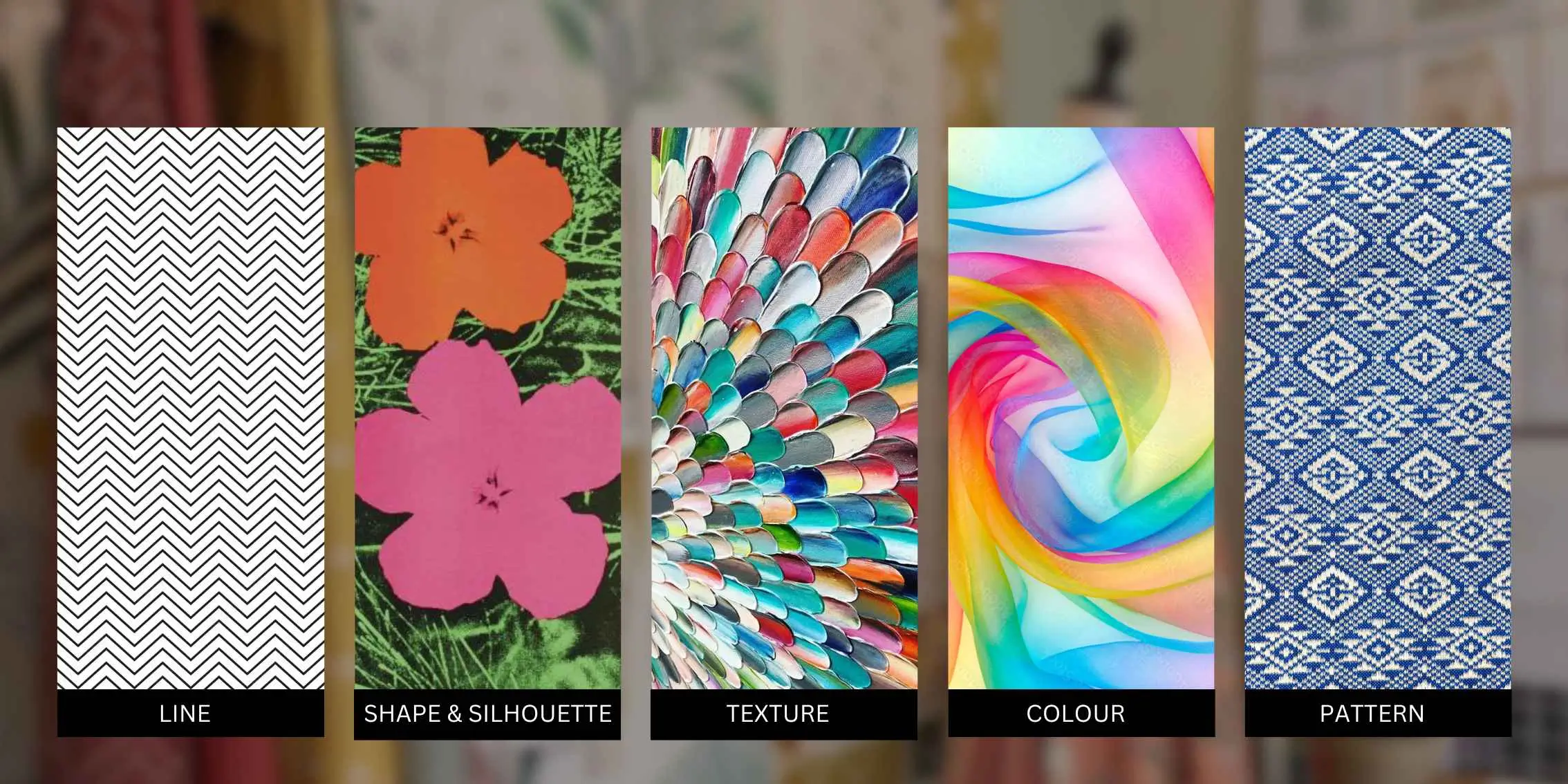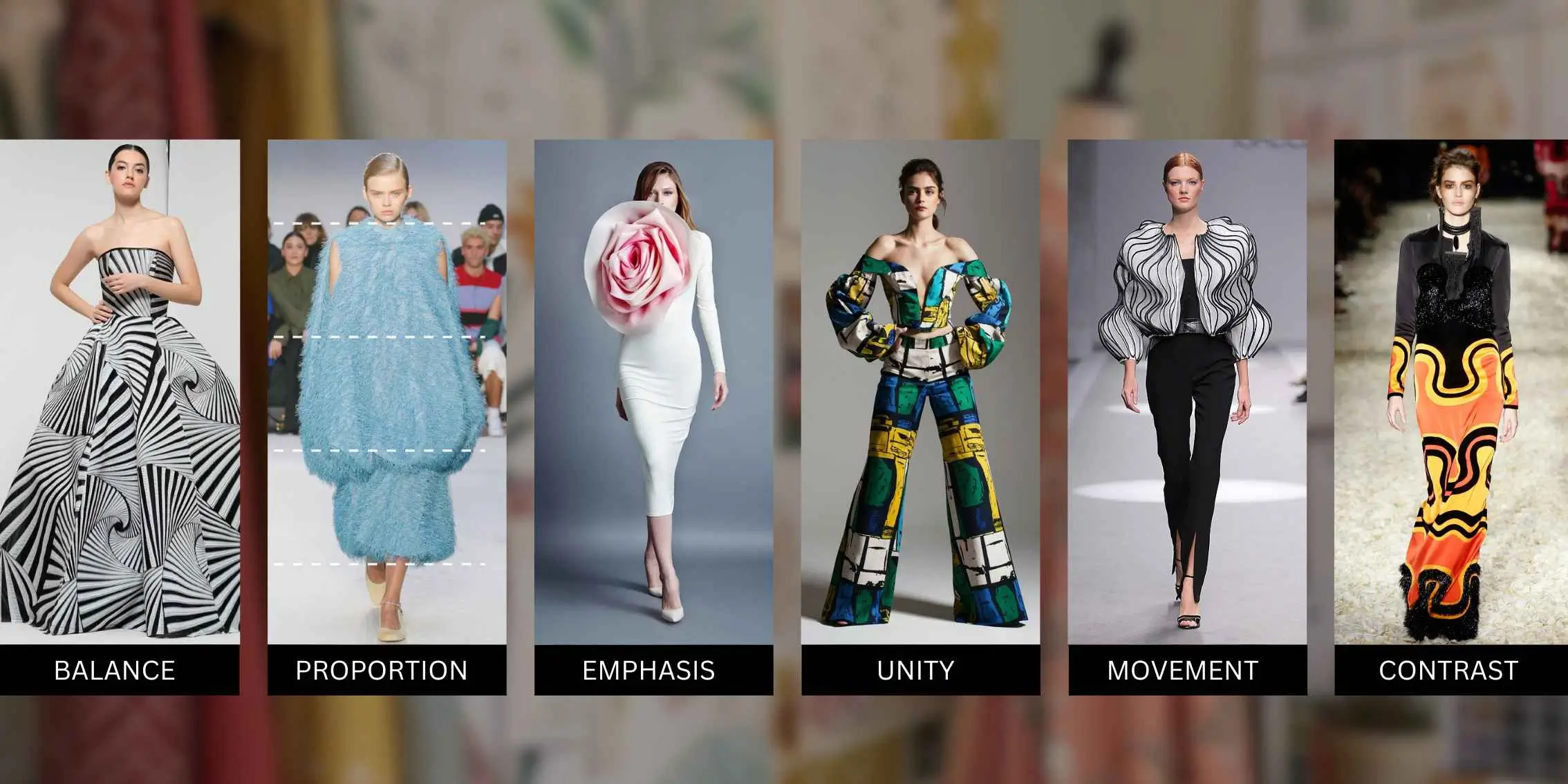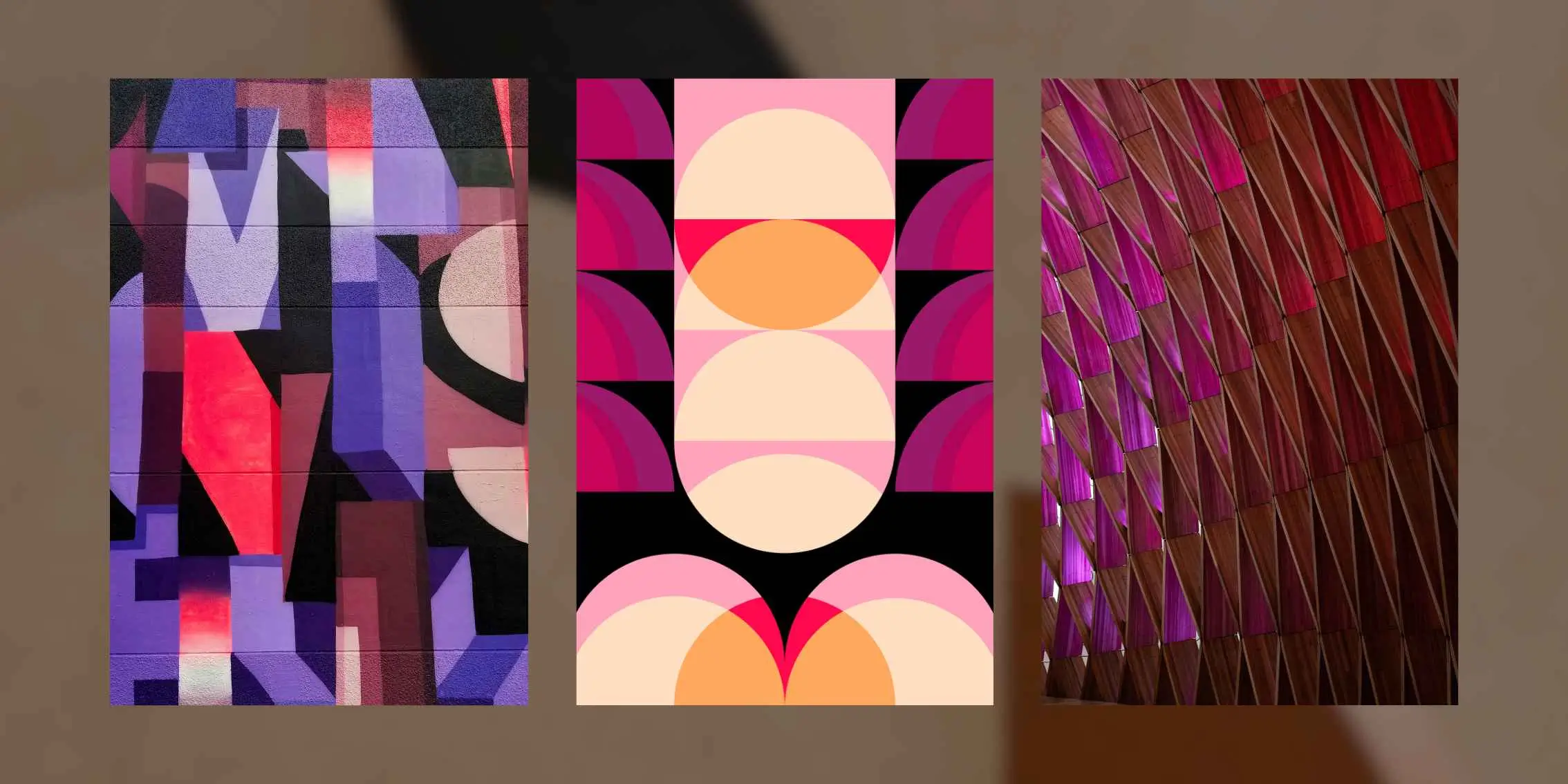Mastering the Basics: Essential Elements and Principles of Fashion
Design
Fashion design isn’t just about sewing fabric together—it’s about capturing a
dream, expressing a unique point of view, and creating wearable art. Whether
you’re a budding designer or a seasoned pro, certain “must-know” fundamentals
underpin every great collection, transforming a quick sketch on a napkin into
garments that truly captivate.
So, what are these essential building blocks, and why do they matter so much? If
you’re looking for a beginner’s guide to fashion design, you’ve come to the
right place. In this article, we’ll walk you through the basics of fashion
design, explaining how they work, why they’re important, and how to harness them
for compelling results. Consider this your welcome mat to the wonderful world of
fashion design—and your first step into The Online Fashion Design Institute’s online
fashion design course.
 Image source: Canva
Image source: Canva
The Essential Elements of Fashion Design
Think of the elements of design as the “ingredients” in a recipe. Just like a
chef balances flavours and textures, a fashion designer works with five core
elements to whip up garments that tell a story and resonate with the wearer:
- Line
- Shape & Silhouette
- Texture
- Colour
- Pattern
 Image source: Pinterest+Pexels
Image source: Pinterest+Pexels
Understanding these elements empowers you to create designs that feel cohesive,
intentional, and undeniably yours.
Line: The Blueprint of Design
What It Is
Lines exist everywhere in fashion—think seams, hemlines, necklines,
topstitching, and even the garment’s outer edges. They guide the eye, give
structure, and influence how the fabric drapes.
Why It Matters
- Focus: The direction and style of a line can lead the
viewer’s eye to specific features or areas.
- Shaping & Fit: Lines can emphasise or disguise certain
parts of the body, affecting how a garment hangs.
- Movement: Curved lines can create softness, while diagonal
lines might add energy and interest.
Types of Lines
- Vertical Lines
- Add length and an elegant vibe.
- Often used in pinstripes, elongated seams, and tailored suits.
- Horizontal Lines
- Ground a design and can widen certain areas (e.g., stripes across the
chest).
- Often found in casual wear or design accents like banded waistlines.
- Curved Lines
- Bring softness and a romantic or fluid look.
- Great for draped silhouettes, feminine dresses, and gathered details.
Shape & Silhouette: The First Impression
What It Is
A garment’s silhouette—or shape—is typically the first thing people notice
before details like fabric or embellishments come into play.
Why It Matters
- Sets the Tone: A classic shape might convey timeless
elegance, while an experimental silhouette screams innovation.
- Defines Eras & Trends: From 1920s drop-waists to 1950s
hourglass dresses, silhouettes often capture the spirit of their time.
Examples
- Classic Silhouettes
- A-line skirts, tailored blazers, and hourglass dresses with a cinched waist
are universally appealing.
- Experimental Forms
- Oversized coats, asymmetric hems, or sculptural runway pieces push creative
boundaries and make bold statements.
Texture: The Feel of Fashion
What It Is
Texture focuses on how a fabric looks and feels—smooth, rough, shiny, matte,
fuzzy, or rigid. It can be experienced visually and through touch.
Why It Matters
- Adds Character: Texture can transform a simple design into
something layered and intriguing.
- Establishes Mood: Light, flowing materials feel romantic;
stiff or structured materials can feel edgy or architectural.
Examples
- Soft & Fluid
- Chiffon, silk, jersey—these drape beautifully, adding a sense of lightness
or romance.
- Bold & Structured
- Denim, leather, neoprene—these hold their shape and can lend an edgy, modern
flair.
- Textural Contrast
- Pair a chunky knit with glossy satin to create immediate visual
excitement.
Colour: The Emotional Core of Design
What It Is
Colour is one of the quickest ways to communicate mood or personality in a
garment—think red for passion, blue for calm, yellow for optimism.
Why It Matters
- Conveys Emotion: Different hues can energise or soothe,
command attention or blend subtly.
- Defines Themes: Seasonal collections often revolve around
specific colour palettes (like warmer shades for autumn/winter).
Points to Consider
- Psychology of Colour: Red feels dynamic, blue is cool and
refined, and neutrals like black or grey create a versatile base.
- Monochrome vs. Contrast: Single-colour looks can be sleek
and cohesive, while bold colour blocking delivers major impact.
- Seasonal Influence: Earthy, rich tones in cooler months;
fresh, bright pastels in warmer seasons.
Pattern: Storytelling Through Design
What It Is
Patterns are repeated motifs—stripes, florals, checks, polka dots,
geometrics—that add personality and narrative to a design.
Why It Matters
- Narrative: A floral might evoke romance, while cultural
prints can honour heritage.
- Visual Variety: Patterns break up solid colours and add
depth or thematic interest.
Types of Patterns
- Cultural & Historical Prints
- Motifs like paisley, tartan, or batik can celebrate tradition and add
thematic richness.
- Geometric vs. Organic
- Geometric patterns (stripes, squares) feel contemporary, while organic
shapes (watercolours, florals) appear softer.
- Strategic Placement
- Prints placed at the waist can emphasise curves; vertical stripes can
elongate the silhouette.
The Principles of Fashion Design
If the elements are your raw materials, the principles are the “game plan” for
combining them effectively. They ensure your designs feel intentional, cohesive,
and visually engaging.
- Balance
- Proportion
- Emphasis
- Unity
- Movement
- Contrast
 Image source: Pinterest
Image source: Pinterest
Balance: Creating Visual Harmony
What It Is
Balance involves ensuring the garment doesn’t feel off-kilter distributing
details, colours, and shapes in a stable way.
Types of Balance
- Symmetrical Balance
- Both sides mirror each other, often yielding a classic, formal look.
- Asymmetrical Balance
- Off-centre details (one-shoulder dress, diagonal hems) add intrigue and
modern energy.
Proportion: The Secret to Flattering Design
What It Is
Proportion concerns how different parts of a garment (and the garment as a
whole) relate to the human form. It’s about pleasing ratios.
Why It Matters
- Flattering Fit: Well-judged proportions can complement many
body types.
- Bold Statements: Oversized or cropped details can be
stylish when balanced well.
Tips
- Golden Ratio: A timeless guideline (approximately 1:1.618)
for naturally appealing proportions.
- Playing with Scale: Pair an exaggerated sleeve with a more
fitted waist to maintain harmony.
Emphasis: Directing Attention
What It Is
Emphasis is about creating a focal point—a distinctive detail, shape, or colour
that draws the eye first.
How to Create It
- Statement Features: Oversized bows, standout collars, or
vibrant colours.
- Subtle Details: Well-placed seams or delicately embroidered
accents.
Unity: Making a Design Feel Complete
What It Is
Unity ties every part of a garment (or collection) together, ensuring it feels
purposeful instead of random.
How to Achieve It
- Consistent Details: Use complementary colours, matching
trims, or recurring motifs.
- Cohesive Collections: A unifying theme—like an era or
nature-inspired palette—can guide an entire range.
Movement: Bringing Fashion to Life
What It Is
Fashion should move gracefully or hold shape intentionally as the wearer walks,
poses, or goes about daily life.
Key Points
- Fluid Fabrics: Silk, chiffon, jersey allow for soft,
flowing motion.
- Structured Fabrics: Leather, neoprene, stiff cotton
maintain a strong shape even in motion.
Contrast: Adding Depth and Interest
What It Is
Contrast highlights differences—dark vs. light, soft vs. stiff, matte vs.
shiny—to keep a design visually dynamic.
Types of Contrast
- Colour Contrast: Pair complementary hues (e.g., blue and
orange) for vibrant tension.
- Textural Contrast: Mix delicate and rugged textures (like
lace and denim) for a striking interplay.
Bringing It All Together: The Design Process
Knowing the “ingredients” (elements) and “recipe” (principles) is one
thing—putting them into practice is another. Here’s a common sequence designers
follow:
- Sketching Concepts
- Rough drawings help you experiment with lines, shapes, and colours
quickly.
- Selecting Fabrics
- Choose materials that suit your intended silhouette and overall vibe.
- Consider texture, weight, and how each fabric behaves under
construction.
- Prototyping and Draping
- Create a mock-up (toile or muslin) to test fit, proportion, and overall
feel.
- Draping on a form reveals how fabric interacts with the body in 3D.
- Refining the Details
- Tweak seams, add finishing touches, confirm your focal point.
- Ensure each design choice aligns with your initial concept and final
vision.
With these steps, you’ll be able to create garments that combine technical skill
with artistic flair.
Your Next Step in Fashion Design
 Image source: Pexels
Image source: Pexels
Every accomplished designer started by mastering these elements and principles.
Once you have them in your toolkit, you can refine, innovate, and eventually
break certain “rules” to develop a truly signature style.
At The Fashion Design Institute, our online
fashion design course expands on these fashion design fundamentals with
practical exercises, expert feedback, and insights into real-world industry
practices—perfect whether you’re aiming for runway fame, a personal label, or
custom commissions.
Ready to take your designs from concept to creation? Enroll
today and begin your journey toward bringing your fashion dreams to life.
When you sign up, you’ll gain access to in-depth tutorials, personalised
mentorship, and a community of fellow creatives—all designed to help you thrive
in this fast-paced industry. Whether you’re a hobbyist with a passion for design
or an aspiring entrepreneur ready to launch a brand, our comprehensive
curriculum will guide you every step of the way. We can’t wait to see the
incredible pieces you’ll create!
 Image source: Canva
Image source: Canva
 Image source: Pinterest+Pexels
Image source: Pinterest+Pexels
 Image source: Pinterest
Image source: Pinterest
 Image source: Pexels
Image source: Pexels